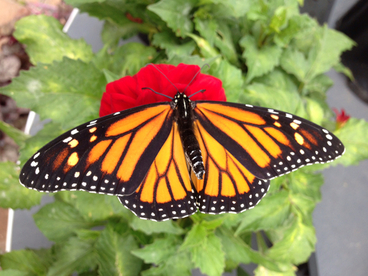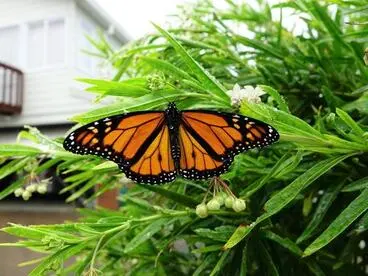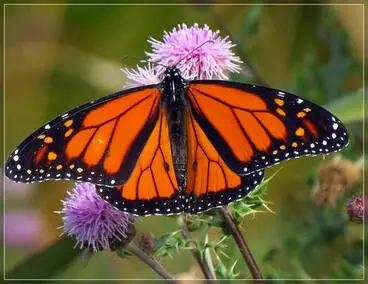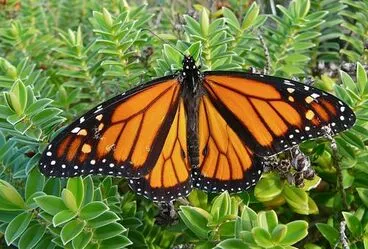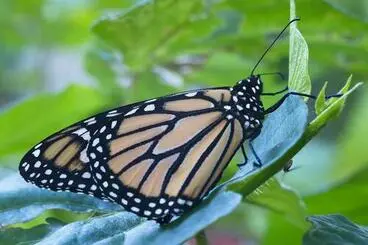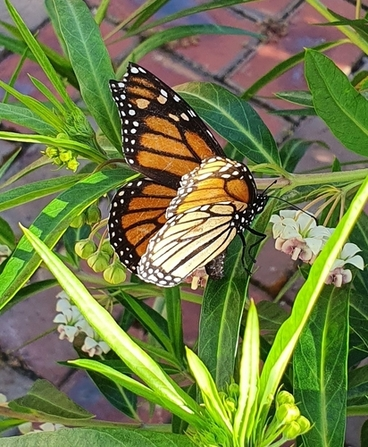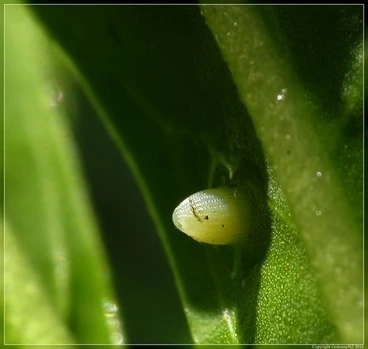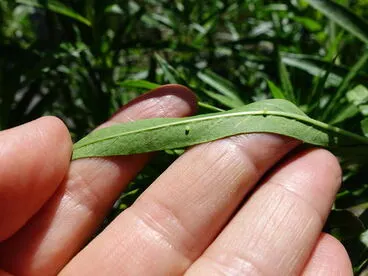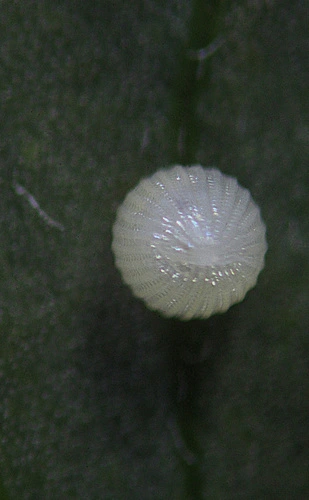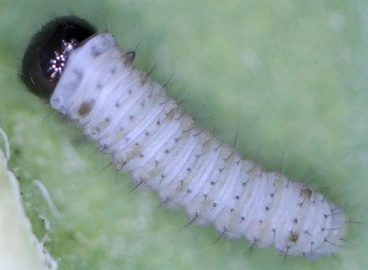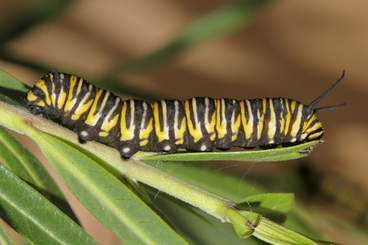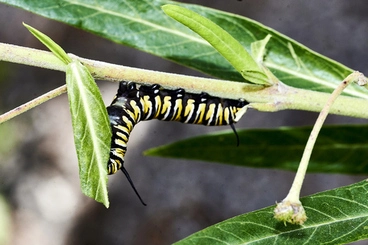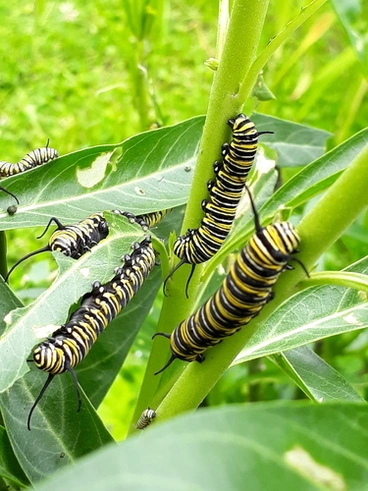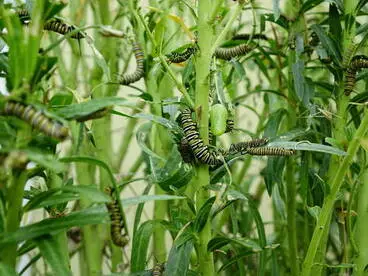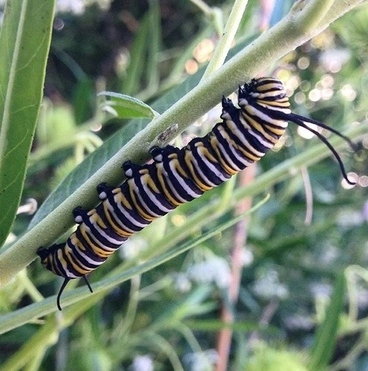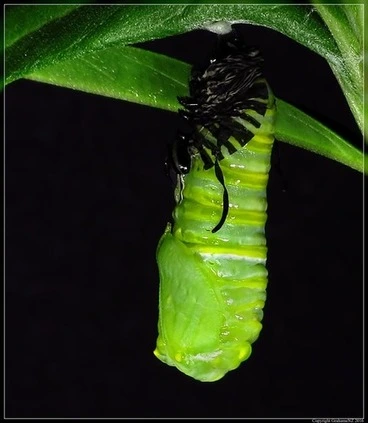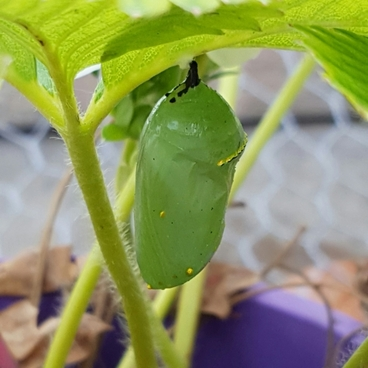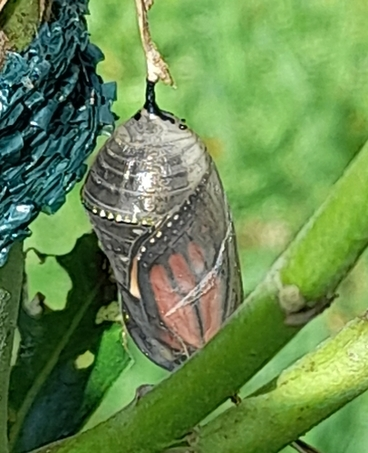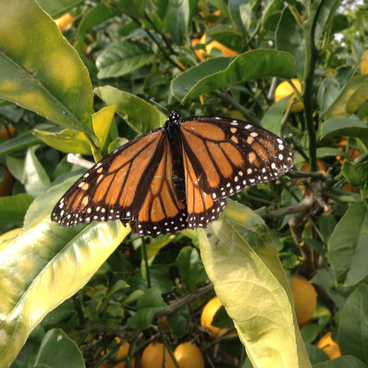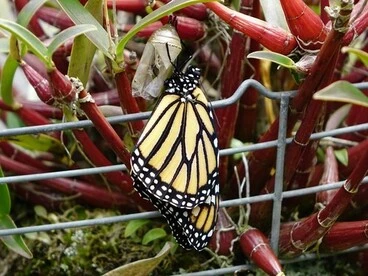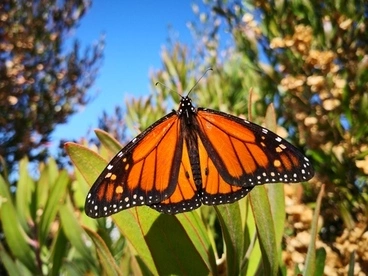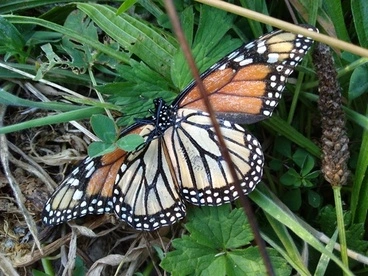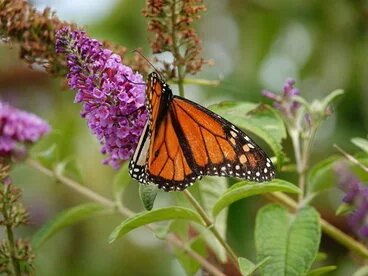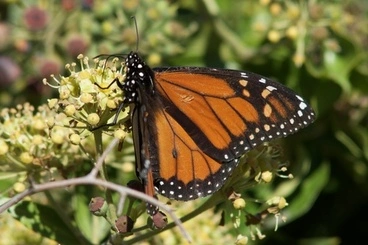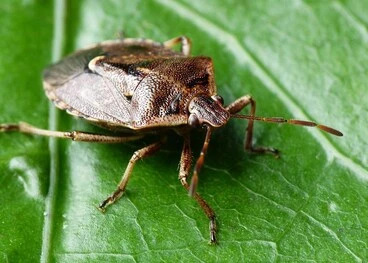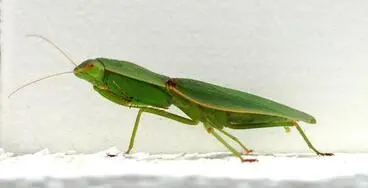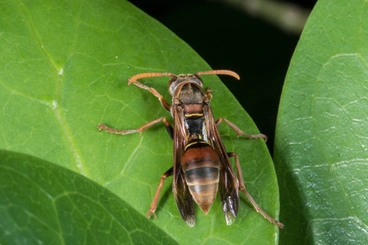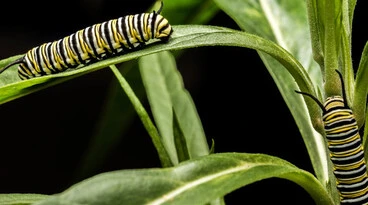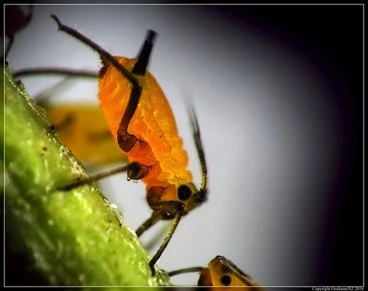Life cycle of monarch butterflies
A DigitalNZ Story by Zokoroa
A story about the life cycle of monarch butterflies and their conservation in NZ.
Butterfly, Monarch butterfly, Insects, Animals, Caterpillars, Flight, Conservation, Life cycle, Lifecycle, Metamorphosis
Monarch butterflies can usually be seen flying amongst the flowers in backyard gardens and parks between September and March in New Zealand. They have an important role to play in helping to pollinate many flowering plants. Each of us can also have a role to play to ensure that the monarch butterfly thrives in our gardens, parks and suburban areas, along with other butterflies and moths. The Moths and Butterflies of New Zealand Trust was formed in 2005, to provide butterfly-friendly conservation advice on ideal spaces, flowers and trees.
Monarch butterfly (Danaus plexippus) usually seen in backyard gardens & parks between September and March in NZ.
Monarch butterflies
Manatū Taonga, the Ministry for Culture and Heritage
Monarchs belong to the insect order Lepidoptera (scaly wings). Their Māori name is kākahu, meaning cloak.
Monarch Butterfly
iNaturalist NZ — Mātaki Taiao
Spot the difference - female & male
Female
Females have thicker black webbing (veins) within their wings, and darker abdomens that are shaped differently.
iNaturalist NZ — Mātaki Taiao
Male
Males have two black scent gland spots at the centre of their hindwings to attract female mates.
iNaturalist NZ — Mātaki Taiao
Distinctive features
The large and brilliantly-coloured monarch butterfly is among the most easily recognizable of the butterfly species. The wings are covered with tiny scales of differing colours to give us the patterns we see. Monarch butterflies communicate with colours and scents. They signal to other animals that they are poisonous by having bright orange wings. The males attract females to mate by releasing chemicals from scent glands on the hindwings.
Aposematic colouring
The bright orange colours and distinctive patterns warn predators the butterflies are toxic and bitter-tasting.
iNaturalist NZ — Mātaki Taiao
The males attract females to mate by releasing chemicals from the two black scent glands on the hind wings.
Monarch
iNaturalist NZ — Mātaki Taiao
The antennae detect pheromones – odour chemicals – used in courtship.
Monarch
iNaturalist NZ — Mātaki Taiao
Life-cycle
Monarch butterflies go through four stages: the egg, the larva (caterpillar), the pupa (chrysalis), and the imago (adult butterfly). During mid-summer, the process goes from egg to adult in about 23 days. A butterfly on 28 February may come from eggs laid before 5 February – but very unlikely to be from an egg laid after that date. Once adults, monarchs have an average lifespan of six to eight weeks in the summer, and 6–8 months if the butterfly pupates in winter. There can be up to three generations of monarch butterflies born each year.
1. Egg: 4-10 days to hatch
The monarch butterfly lays eggs on milkweed plants. It takes about 4-10 days for the eggs to hatch into a caterpillar. Times are longer for cooler conditions, than in the peak of the summer.
Females lay 300-400 eggs (c40 per day) on the underside of a milkweed leaf & attach with special glue.
Monarch
iNaturalist NZ — Mātaki Taiao
As the larva develops, the egg changes in colour. It is grey when about to hatch & the black head is visible.
Monarch
iNaturalist NZ — Mātaki Taiao
Eclosion (hatching) occurs in 4–8 days. They eat their way out their eggshell & eat the shell which is full of protein.
Monarch
iNaturalist NZ — Mātaki Taiao
Egg darkened just before hatching
Egg of Monarch darkened just before hatching
Museum of New Zealand Te Papa Tongarewa
Spot the head or tail!
Caterpillars have three distinct body parts: the head, thorax, and abdomen.
Monarch
iNaturalist NZ — Mātaki Taiao
Each leg has a single claw & the spinneret at bottom of head also produces silk, to help anchor itself to the plant.
Monarch
iNaturalist NZ — Mātaki Taiao
They obtain oxygen through holes in sides of thorax & abdomen called spiracles which connect to air tubes (trachea).
Brown soldier bug
Manatū Taonga, the Ministry for Culture and Heritage
Pair of soft, black filaments (sense organs) at each end of their body. Filaments behind the head wiggle when it feeds.
Monarch
iNaturalist NZ — Mātaki Taiao
The maxillary palps (sensory organs below the mandible) help direct food into its jaws.
Monarch caterpillar
Manatū Taonga, the Ministry for Culture and Heritage
2. Larva stage (caterpillar): 9-20 days to grow
The baby caterpillar spends its time eating plants in order to grow. In 2–3 weeks, the caterpillar grows to about 2,700 times its birth weight! (See Science Learning Hub)
Main food: Swan milkweed and balloon plant
The main food source for caterpillars (larvae) comes from the Gomphocarpus genus, which includes the swan milkweed and balloon plant. The Swan plant is so called in NZ, because the green seed pods are shaped like a swan - the stem being the long neck, and the sap is milky-white. Adult monarchs also feed on the nectar of milkweed flowers, as well as other plants.
After they emerge, caterpillars start feeding at the base of a leaf so that some of the toxic sap can drain away.
Monarch
iNaturalist NZ — Mātaki Taiao
Monarch
iNaturalist NZ — Mātaki Taiao
Monarch
iNaturalist NZ — Mātaki Taiao
Caterpillar moults five times
As the caterpillar grows and becomes too big for its skin (exo-skeleton), it moults or sheds its skin five times. For photographs and a description of how the caterpillar looks after each of the five stages of moulting (known as instar stages), see Monarch Joint Venture - Life Cycle.
3. Pupa stage (Chrysalis): 10-28 days to metamorphosize
After the caterpillar is fully-grown, it will find a sheltered place to attach itself in an upside down 'J' shape. It will then start the process of transforming into a chrysalis over the next 10-28 days. The monarch’s scientific name, Danaus plexippus, means ‘sleepy transformation’.
Attaches itself upside down in 'J' shape using black silk from spinneret on the bottom of its head to form a silk mat.
Monarch
iNaturalist NZ — Mātaki Taiao
Bodily changes include the straw-like proboscis replacing jaws; and wings & reproductive organs developing.
Monarch Caterpillar Hanging Down to Pupate
Museum of New Zealand Te Papa Tongarewa
Inside the chrysalis, the transformation starts into a beautiful butterfly.
Monarch
iNaturalist NZ — Mātaki Taiao
4. Imago stage (adult): Butterfly emerges
The monarch butterfly will emerge hanging upside down from the pupa with an enlarged abdomen that is full of fluid. By hanging downwards, gravity will help them to pump the fluid from their abdomen into their wings. This allows the wings to expand and dry so that the monarch can use them to fly.
The butterfly is ready to hatch when the black, orange, & white wing patterns are visible as pigmentation is completed.
Monarch
iNaturalist NZ — Mātaki Taiao
The pumped fluid allows the wings to expand and dry so that the monarch can use them to fly.
Monarch
iNaturalist NZ — Mātaki Taiao
Monarch butterfly recently emerged from chrysalis, wings still damp.
Monarch
iNaturalist NZ — Mātaki Taiao
The thorax is made up of 3 segments, with second and third segments also having a pair of wings attached to them.
Monarch
iNaturalist NZ — Mātaki Taiao
Adult MONARCH BUTTERFLY: LIVES FOR 2-8 MONTHS
The adult butterfly has an average lifespan of six to eight weeks if it pupates during the summer, but this extends to 6–8 months if the butterfly pupates in winter. The primary role of the adult stage is for the monarchs to reproduce — to mate and lay the eggs that will become the next generation, with three generations occurring each year.
After mating & egg-laying, the adult butterflies die & the next cycle of butterflies is continued by their offspring.
Monarch
iNaturalist NZ — Mātaki Taiao
Conservation of monarchs
Swan plants, nectar plants & trees
The main food source for monarchs are the Swan Plant (Gomphocarpus fruticosus), Giant Swan Plant (Asclepias physocarpus) and Tropical Milkweed - Bloodflower (Asclepias curassavica). Garden plants rich in nectar will also attract monarch butterflies. Spring flowers, such as Verbena, Cineraria, are ideal for butterflies coming out of overwintering who are very hungry for nectar. For advice on growing plants and which plants to avoid, see Moths and Butterflies of New Zealand Trust – Monarch Health.
Plants rich in nectar include azaleas, blue salvia, dianthus, petunias, sunflowers, wallflowers & zinneas.
Monarch
iNaturalist NZ — Mātaki Taiao
Fruiting trees & ornamental blossoms (e.g. flowering cherries & mock orange blossom) are also frequented by monarchs.
Monarch
iNaturalist NZ — Mātaki Taiao
Winter months
Monarchs are more sensitive to cold than other butterflies and are less common in the far south of NZ. When the air temperature drops to 12.8°C around April or May, monarchs start flocking to sites that tend to be in milder coastal locations where the temperature remains at least 10°C. When the temperatures warm up in Spring (around September/October), butterflies move inland to reproduce. (See Science Learning Hub and The Butterfly Musketeers.) For tips on maintaining swan plants in gardens over winter whilst awaiting the return of the monarch butterflies, see Moths and Butterflies of New Zealand Trust.
Swarms (known as a kaleidoscope) occur in places like Tauranga Bay in Northland, Hawke’s Bay, Nelson & Christchurch.
Monarch butterflies
Manatū Taonga, the Ministry for Culture and Heritage
Prefer areas sheltered from wind, trees with rough bark to cling to (eg conifers), & flowers for nectar are nearby.
Monarch
iNaturalist NZ — Mātaki Taiao
Threats to the monarch
Insects:
The brown soldier bug (Cermatulus nasalis) uses its hollow beak as a straw to suck the insides out of larvae.
Brown Soldier Bug - Cermatulus nasalis
Manatū Taonga, the Ministry for Culture and Heritage
Praying mantis (Miomantis caffra Saussure and Orthodera novaezealandiae Colenso) eat them.
New Zealand Mantis
iNaturalist NZ — Mātaki Taiao
The Tasmanian paper wasp (Polistes tasmaniensis) picks up larvae and carries them away.
Tasmanian Paper Wasp
iNaturalist NZ — Mātaki Taiao
Article (2014) on repelling threat of wasps by using a mite
Disappearing Monarch Butterflies
Radio New Zealand
Lack of swan plant food:
The monarch butterfly's main habitat is urban and suburban gardens. Swan plants are the main source of food. However, as larvae grow they can quickly strip the plants, leaving hungry caterpillars looking for food. Did you know that a monarch can smell a milkweed from as far away as 2 kilometres! (See Moths and Butterflies of New Zealand Trust)
Monarch butterflies also face competition for the swan plant from aphids: "By piercing the cell wall of leaves and stems to suck the sap they weaken the plant, leaving a wound that can allow disease to get in". (Source: Moths and Butterflies of New Zealand Trust which provides advice on dealing with aphids.) Planting marigold flowers near swan plants will also help to repel aphids - marigolds emit a scent unattractive to aphids and attracts hoverflies, which are a predator of aphids.
As larvae grow they can quickly strip swan plants, leaving hungry caterpillars looking for food.
Monarch
iNaturalist NZ — Mātaki Taiao
Aphids pierce the cell wall of leaves & stems to suck the sap, leaving a wound for disease to enter.
Oleander Aphid
iNaturalist NZ — Mātaki Taiao
Monitoring monarchs
Butterfly experts in the United States and NZ are concerned that the number of monarchs have been declining.
Every autumn millions of monarchs leave southern Canada and northern United States to journey 5,000 kilometres southwards. After spending the winter in the Mexican mountains, they return northwards breeding along the way. Their offspring then make the trip back to Mexico at the end of the following summer. The National Geographic (22 Dec 2018) reported that numbers had plunged more than 80 per cent over the past 20 years in America. In 2022, the International Union for the Conservation of Nature added the monarch butterfly to its "red list" of threatened species and categorised it as "endangered" — two steps from being extinct. (Source: NZ Herald (23 July 2022), “Monarch butterflies now listed as endangered”)
In NZ, the tagging of monarch butterflies began in 2005/2006 as a trial and continued until 2021. The aim was to gather information about the migration and overwintering habits of monarchs, and the indicators of environmental change. Based on the data that was reported, there appeared to be no discernible pattern of migration or any common destination. See Moths and Butterflies of New Zealand Trust and the Science Learning Hub.
RNZ interview (19 April 2011) on the tagging butterflies in NZ to find out migration patterns. (5:49min)
Monitoring monarch butterflies
Radio New Zealand
During 2020-2021, an outreach science programme was conducted by Victoria University for citizen scientists to help examine diseases in monarch butterflies caused by parasites. The protozoan parasite Ophryocystis elektroscirrha, or OE, causes adult butterflies to have crumpled and deformed wings. Members of the public were asked to forward samples of spores collected by pressing a bit of cellotape against the butterfly's abdomen. The findings showed there was more OE in the warmer north and less in the south. See: Victoria University of Wellington, Wellington Faculty of Science - Outreach Programme “Tracking Disease in New Zealand's Monarch Butterflies looking a diseases”
RNZ interview (11 May 2020) on Victoria Univ wanting help to monitor parasite OE damaging monarchs' wings. (15:48 min)
Citizen scientists enlisted to help monarch butterflies
Radio New Zealand
RNZ (22 July 2021): Over 100 people collected samples of spores from monarchs' abdomens by using cellotape. (9:49min)
Citizen scientists help Monarch butterfly discovery
Radio New Zealand
Research paper (2022) on the results of the study found more OE in the warmer north than the south of NZ.
Wing Deformities in Monarch Butterflies in New Zealand: The Role of a Parasite and the Climate
Victoria University of Wellington
FIND OUT MORE - Educational resources include:
- Moths and Butterflies of New Zealand Trust
- The Butterfly Musketeers
- Science Learning Hub
- Also see images on DigitalNZ from content partner iNaturalist NZ - Mātaki Taiao

